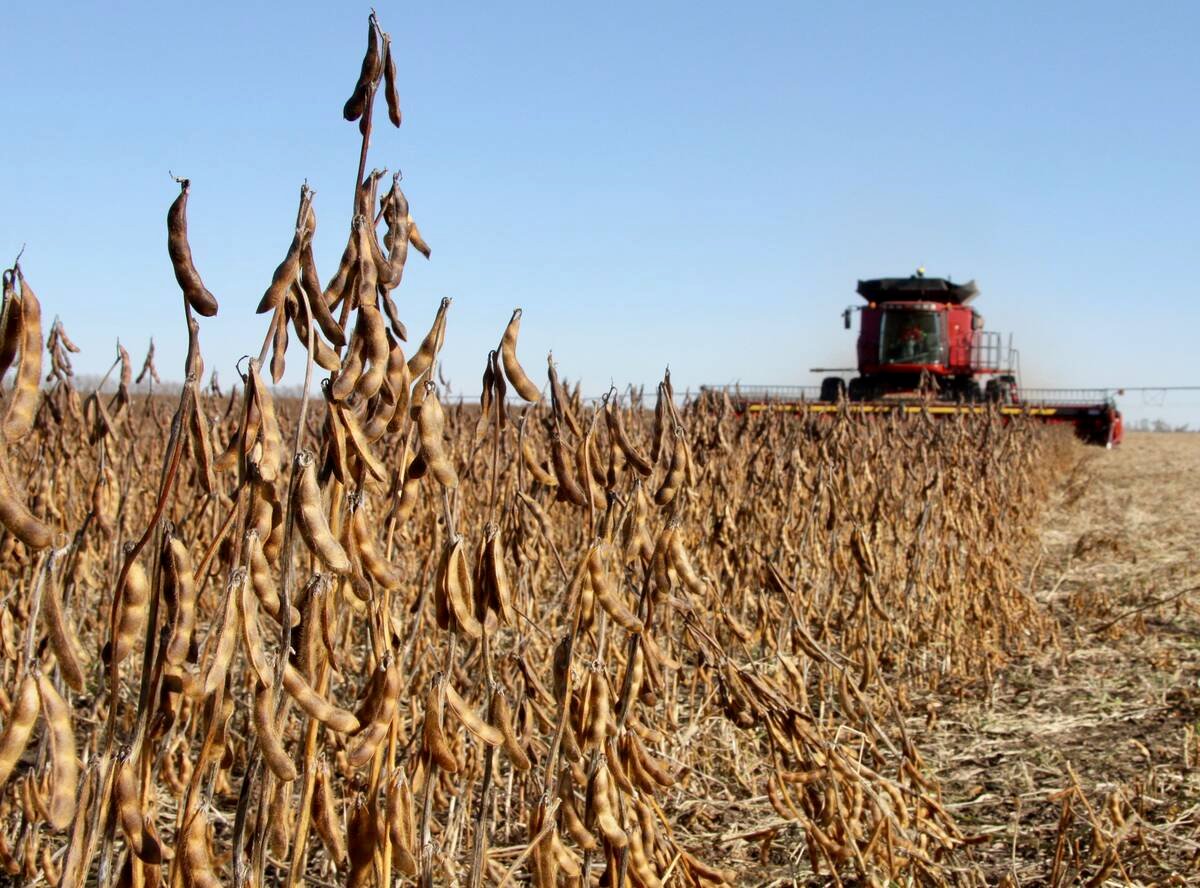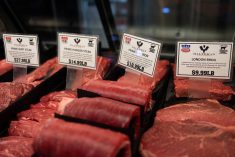Fed cattle fall
Higher corn costs raised expectations of herd contraction, which caused Chicago fed cattle futures prices for 2009 to rise on the expectation that a smaller herd and reduced beef supply next year would raise cattle and beef prices.
U.S. cash cattle markets were weakened by the continuing dispute with South Korea about reducing its restrictions on American beef.
The Canadian dollar weakened against the U.S. buck, but Canadian fed cattle prices dropped.
Steers averaged $89.20 per hundredweight, down 90 cents from the week before. Heifers fell $2.11 per cwt. to average $88.59, said Canfax.
Read Also

U.S. soybean crop was not all roses this year
The USDA is forecasting record U.S. soybean yields but for some growers it was a disastrous year due to excess moisture.
Sales totalled 23,000 head, four percent more than the week before.
The cash to futures basis widened to $6.47 under compared to $4.80 under the week before.
Canfax expected soft demand this week, but steady prices. It said feedlots might hold cattle back in the hope of pushing prices higher.
D1, 2 cows averaged $45 for the week, up $3 compared to last year. Butcher bulls were steady at $54, up $14 from last year.
Prices for slaughter cows and butcher bulls should be steady to slightly lower this week, Canfax said.
Beef steady
Canadian packer business was steady but warmer weather would help.
Wholesale prices for delivery this week were steady with Calgary at $151-$155 and Montreal at $160-$161.
The U.S. Choice cutout rose 97 cents to close June 3 at $156.88, up $6.41 from last year.
Select rose 44 cents to close at $153.20, up $9.30 from last year.
Feeders mixed
Feeder cattle trade totalled 28,090 head, down five percent from the week before but up 12 percent from last year.
Demand weakened with steers averaging 92 cents lower than the week before and heifers rising 43 cents.
Steers heavier than 700 pounds fell 93 cents and heifers rose $1.21.
Steers lighter than 700 lb. fell 92 cents and heifers fell 15 cents.
Bred cows fell $50 to $687 in light volume.
Cow-calf pairs rose $25 to average $887 for the week. That was $126 less than the same period last year.
Hog prices fall
Pork prices slid and demand weakened, but cash hogs in the U.S. were fairly steady.
Rising corn prices had traders thinking that producers might rush to market to avoid high feed costs.
Iowa-southern Minnesota cash hogs were about steady at $54.50-$55 US per cwt. May 30, compared to $55 May 30.
The U.S. composite pork carcass cut-out value fell to $76.76 June 6, from $79.74 May 30.
U.S. slaughter for the week ending June 7 was estimated at 2.1 million, up from 1.83 million the week before, and 10.9 percent more than last year.
Bison stronger
The Canadian Bison Association said A1 bulls and heifers rose.
Grade A carcasses from youthful bulls in the desirable weight range in Canada were $2.05-$2.25 per lb.
Heifers were $1.95-$2.20 per lb.
Cull cows and bulls were 90 cents to $1 per lb. hot hanging carcass.
Sheep steady to higher
Beaver Hill Auction in Tofield, Alta., reported 655 sheep and lambs and 125 goats traded May 26.
Sheep and goats traded steady to higher. Meat type kid goats sold as high at $2.10 per cwt.
Lambs lighter than 70 lb. were $140-$182 per cwt.
Lambs 70 to 85 lb. were $142-$178. Those weighing 86 to 105 lb. were $139-$174 and those heavier than 105 lb. were $128-$147.50.
Rams were $40-$59 per cwt. Cull ewes were $30-$46 per cwt. and bred ewes were $44-$80 per head.
Good kid goats were $170-$210. Billy kids 70 to 90 lb. were $200 or more. Nannies were $61-$98 per cwt. and mature billies were $114.50-$207.50.
Ontario Stockyards reported 1,763 sheep and lambs and 84 goats traded June 2. All classes of lambs sold steady, while heavy lambs traded stronger. Sheep and goats sold barely steady.














